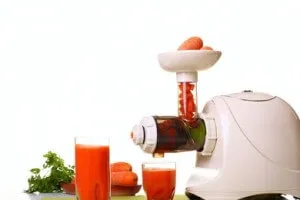So, you have made the decision to start juicing. This is good news. Juicing is a great addition to a healthy diet and can cleanse the body of unwanted toxins, improve digestion and regulate metabolism.
Once you have decided to try juicing there are a few things to take care of before you begin. Here are some tips to help keep your juicing experience positive.
Purchasing a Juicer
Because you cannot purchase any fresh vegetable juices in a carton or a can, you will need to prepare your own juice at home. First things first, it is essential to note that a juicer is not the same as a blender. A juicer makes juice and a blender makes mush. In order to make vegetable juice, the fluid part of the vegetables must be extracted along with the vitamins, minerals and enzymes.
For this, you need a juice extractor. It is necessary not to skimp on quality when selecting a juicer, you will be sorry later. Be prepared to spend a little bit of money for a decent machine, possibly $200 or more. Good juicers will make tasty juice quicker and easier than cheap models. Keep an eye out for sales or perhaps buy a juicer second-hand to save some money.
What to Juice
Anything that you can eat raw you can juice. Vegetables such as carrots, beets, cucumbers, tomatoes, squash, romaine lettuce, celery, cabbage and sprouts are excellent to start with. You can juice fruits as well, such as raw apples, grapes and melons.
We like to recommend the 80/20 method. Make sure your juices consist of at least 80% vegetables and 20% fruits.
The best and healthiest way to approach juicing is to use produce that you don’t normally eat on a regular basis. If your diet doesn’t contain a good amount of leafy greens, use those in your juices. The majority of us have no problem eating sweet succulent fruits, but the real power of juicing comes in the form of veggies that have very little, if any amounts of sugar, but tons of vitamins, minerals and enzymes we can’t find anywhere else.
It is not really wise to juice potatoes, lima beans or eggplant. Also, leave the bananas out of the juicer and keep them in your blender for smoothies. These tend to clog the juicer and extract very little juice.
Always use organic fruits and vegetables to juice. Pesticides will make it through to your juice, so remember that when purchasing. If organic produce is not available, it is always a good idea to peel produce that has been sprayed or waxed, including apples bought at the store and cucumbers.
If you purchase organic carrots and other root vegetables, there is no need to peel them. Instead, run a bristle brush over them a couple of times while holding them under water. Beets should also be peeled before juicing as the skin is bitter. Drink your juice right away – it is healthier and tastier this way. Drink as much juice as you would like to in a day.
Cleaning Up

Rinse the parts immediately under warm water and set them in the dish drainer until you need them next. Soap is not necessary as long as you rinse the parts well. Over time, they will become discolored. Pay special attention to the metal screen used to filter the pulp. It will become clogged sooner or later. Rinse it under the tap immediately after use to get rid of residue.
Healthy Juices to Consider
- Carrot – high in vitamin A
- Cucumber – tastes like watermelon
- Kale – loaded with minerals and chlorophyll
- Beet – considered a blood builder
- Cabbage – may improve a variety of gastrointestinal disorders
- Tomato – contains the powerful antioxidant lycopene
Want more tips on juicing? Leave us your questions in the comments below!
-The Alternative Daily
